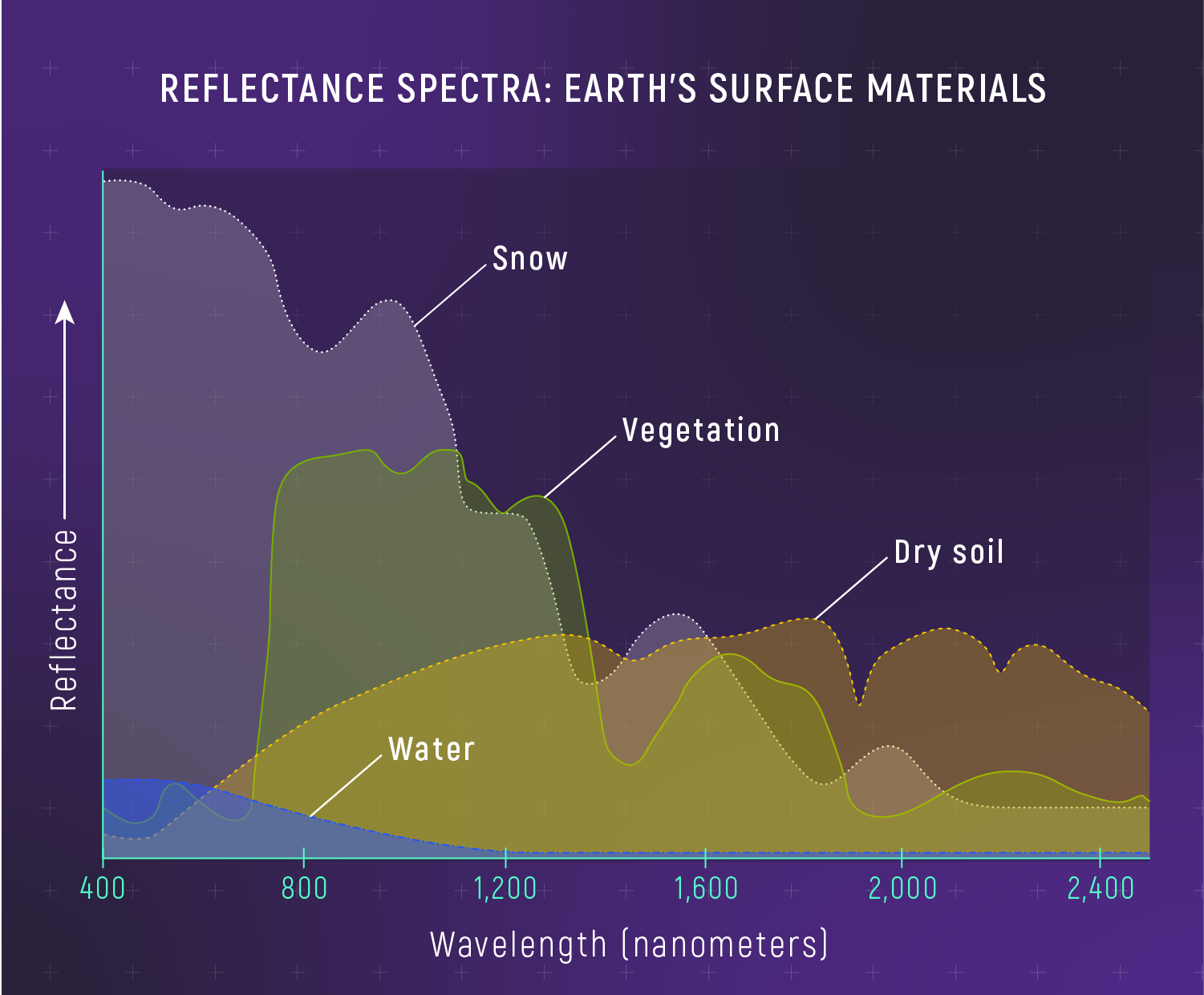1 min read
Reflectance Spectra of Materials on Earth’s Surface

Graphs of reflectance vs. wavelength of snow, water, vegetation, and dry soil. A reflectance spectrum shows the wavelengths (colors) of light that reflect off a surface. Different materials on Earth’s surface have different spectra because they reflect sunlight in different ways. (Human eyes can distinguish between snow, water, vegetation, and soil based on their color, which is a result of the various wavelengths they reflect.) Earth scientists use reflectance spectroscopy to study rocks, soil, ocean water, ice caps, mineral deposits, forests, farmland, dust storms, volcanic eruptions, and even wildlife. Planetary scientists can compare the reflectance spectrum of a distant planet to reflectance spectra of different materials on Earth’s surface to figure out what rocks, minerals, liquids, and ices could be on the planet.
Share
Details
Laura Betz
NASA’s Goddard Space Flight Center
Greenbelt, Maryland
laura.e.betz@nasa.gov
NASA, ESA, CSA, Leah Hustak (STScI)






























